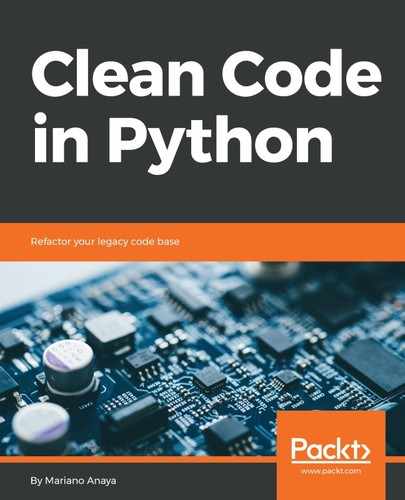The canonical reference in this subject, as written by the GoF, introduces 23 design patterns, each falling under one of the creational, structural, and behavioral categories. There are even more patterns or variations of existing ones, but rather than learning all of these patterns off by heart, we should focus on keeping two things in mind. Some of the patterns are invisible in Python, and we use them probably without even noticing. Secondly, not all patterns are equally common; some of them are tremendously useful, and so they are found very frequently, while others are for more specific cases.
In this section, we will revisit the most common patterns, those that are most likely to emerge from our design. Note the use of the word emerge here. It is important. We should not force the application of a design pattern to the solution we are building, but rather evolve, refactor, and improve our solution until a pattern emerges.
Design patterns are therefore not invented but discovered. When a situation that occurs repeatedly in our code reveals itself, the general and more abstract layout of classes, objects, and related components appears under a name by which we identify a pattern.
Thinking the same thing, but now backward, we realize that the name of a design pattern wraps up a lot of concepts. This is probably the best thing about design patterns; they provide a language. Through design patterns, it's easier to communicate design ideas effectively. When two or more software engineers share the same vocabulary, and one of them mentions builder, the rest of them can immediately think about all the classes, and how they would be related, what their mechanics would be, and so on, without having to repeat this explanation all over again.
The reader will notice that the code shown in this chapter is different from the canonical or original envisioning of the design pattern in question. There is more than one reason for this. The first reason is that the examples take a more pragmatic approach, aimed at solutions for particular scenarios rather than exploring general design theory. The second reason is that the patterns are implemented with the particularities of Python, which in some cases are very subtle, but in other cases, the differences are noticeable, generally simplifying the code.
